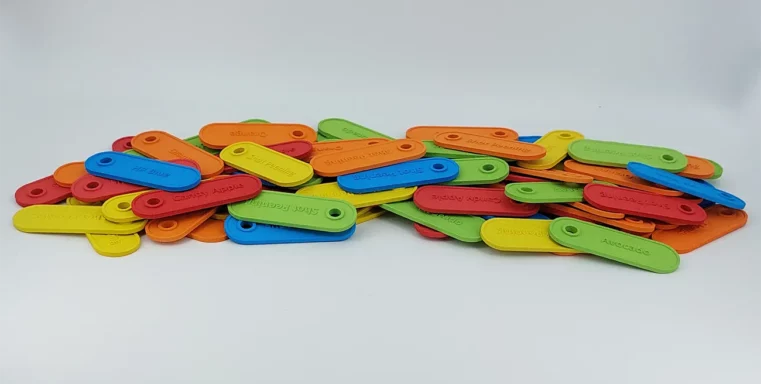
28.9.2023
Technology Overview Color 3D Printing
Until recently, the rule in 3D printing was often, "As long as it's black." But times change, and so has the world of 3D printing. In our latest blog article, we take a look at the exciting evolution of monochrome and full-color 3D printed parts, and the innovative technologies behind them. Learn how you can produce high-quality single-color parts, whether it's by choosing the right raw material or using innovative dip-dyeing techniques. Also discover the world of "full-color" components, from cost-effective solutions to high-end technologies.
29.9.2022
Automation in additive manufacturing
3D printing was originally purely a prototyping technology. As the focus is now shifting more towards (small) series production, the automation of additive manufacturing is becoming increasingly economical and sensible. In this article, you can find out which approaches are being pursued and where the industry currently stands.
02.9.2022
Surface treatments of additively manufactured plastic components at a glance
Figure 1: Components during automated shot peening. Source: 3Faktur. The surface treatment technology varies depending on the additive manufacturing technology. In the early days of additive plastic manufacturing, the surfaces of the components produced were rather rough and not up to industrial standards. In the meantime, the surface quality has reached industrial standards. In the interests of the quality and performance of the components, the ...
29.8.2018
The file format STL and its importance for 3D printing
Even though the STL format is around for about 30 years, it is still the single most important format for 3D printing. An STL (Standard Tessellation Language) serves as an interface between the design file (CAD) and the 3D printer. In this article, we explain the technology behind the file format, what programs to use to open the files and possible alternatives of the STL format.
03.7.2018
Polyamides and their importance for 3D printing
Polyamides are a family of engineering plastics that are used across all industries for demanding applications. They play a prominent role in 3D printing, as they are used in particular in powder-based technologies (laser sintering, multi-jet fusion). We give you an overview of polyamides as such, individual representatives of the group and a brief overview of other typical polymers in industrial 3D printing.
24.7.2017
3D printing support structures
Support structures are an important element in 3D printing. They not only significantly determine the price, but also the quality of a component. Not all 3D printing processes require support structures. Some processes use special, often water-soluble support masses. This article provides an overview of the purpose and benefits of structures and the processes in which they play a role.
24.2.2017
Avoid mistakes with 3D printing: How to achieve your desired result
3D printing opens up many possibilities, but also has its limitations. In this article, we explain what possible sources of error are and how they can be avoided so that your 3D print turns out the way you want it to.
07.12.2016
Direct Metal 3D Printing: Process, Technology and Application
Sales figures and the willingness of industries to invest in additive manufacturing of metal prove that this technologies possibilities and importance are growing: Investments: A study of KMPG, an auditing company in Germany, shows that nearly 25% of managers in metal sectors invest in additive manufacturing and 27 % of industries which already have such ...
17.2.2016
3D RAPID PROTOTYPING: METHODS AND APPLICATIONS
Rapid prototyping (RP) is currently on everyone's lips, with many researchers saying that the technology is one of the defining megatrends of the near future. But what does this term actually mean? The term rapid prototyping has established itself as a generic term for many 3D printing applications.
09.2.2016
Depending on the shape and use of the object, a variety of materials are available for your 3D print. The most commonly used materials are photopolymers/resins (e.g. for SLA or PolyJet), metal powders (e.g. aluminum, titanium, steel), plastic powders (e.g. PA 12, TPU) and plastic filaments (e.g. ABS or PLA), but also food ... more